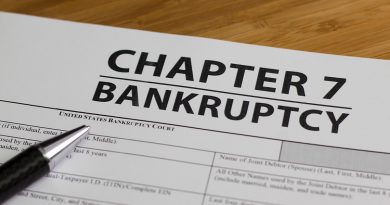Borrowing Costs Rise Amid Increasing Default Fear
A group of fund managers has issued a grave warning about the rising risk of credit defaults. They claim that borrowing prices are skyrocketing and the prospect of a global recession is approaching as well. As a result, it has caused the central bank interest rates to hike and it will cause a wave of corporate defaults.
What does the survey predict?
According to a quarterly study of international money managers, global monetary policy tightening will cause firm defaults to increase. It will hike from extremely low levels seen during the pandemic.
In fact, according to the recent quarterly survey, not a single member of IACPM expressed the opinion that corporate defaults will reduce. The International Association of Credit Portfolio Managers conducted the survey and released it on July 14,
Rather, defaults would increase globally among industrialized nations. The majority of respondents, who included banks, insurers, and asset managers have the same opinion about it. Besides, Europe’s economy would be particularly vulnerable. The country is most likely to go through a prolonged recession brought on by an oil crisis.
What does the credit default outlook score look like?
The association’s most recent credit default outlook score was negative 82.3. It is a significant decrease from the previous quarter’s score of minus 58.0. Moreover, there’s a significant decrease from the positive 2.6 recorded nine months earlier. The negative numbers imply belief in an impending credit squeeze. Meanwhile, positive numbers represent prospects for improving credit conditions.
“Looking at these data, it’s very impossible not to think the probability of recession is quite high virtually around the world, ” says Som-Lok Leung.
Besides, he further added that there is a growing consensus among the members and in the financial markets that the US Federal Reserve will need to trigger a recession to rein in rising inflation.”
However, according to IACPM, Europe is in a worse situation than the United States. Businesses and individuals there enjoy high levels of liquidity and default rates are at record lows. Furthermore, Leung pointed out that America is not immune to the prospect of default.
Default rates are at an all-time low right now. However, Leung predicted they will rise as the year progresses. Consumers and businesses currently have some breathing room. But, the members predict a sharp increase in default rates in 2023 and possibly even in 2024.
What are the factors causing a rise in interest rates?
According to the association’s poll, borrowing rates for highly rated enterprises have increased during the last three months. And the reasons behind it are the stricter monetary policy and concerns about a recession in the United States and Europe. Credit spreads on lower-rated corporations in the US and the eurozone increased by 1.65 percentage points. This is their biggest level since before the epidemic. As a result, corporate borrowers were put under financial strain in June.
Corporate default rates reached historic lows during the Covid period. It was because central banks flooded the economy with stimulus measures. Additionally, it slashed interest rates and purchased corporate bonds to lower borrowing costs for the private sector. However, rates in America and Britain have risen to their highest levels in 13 years. Besides, the 40-year high inflation has thrown monetary policy into reverse. As a result, money managers warned that if GDP slowed and rate-setters were forced back into stimulus mode, central bank interest rates run the risk of becoming “a harsh weapon bearing a substantial risk of an overcorrection.
Moreover, businesses that raise capital on the bond market run the risk of having their revenues affected by slowing economies and rising interest rates. While lower-graded high yield bonds have increased to 9% in yield, average investment grade bonds currently carry a yield of roughly 4.5 to 5%.
Besides, money managers warned that Europe ran the risk of seeing the longest growth slowdown in the industrialized world. It was due to the energy constraints brought on by the war in Ukraine. According to Leung, the only “silver lining” for European businesses in the face of a recession would be the opportunity for reduced interest rates from the European Central Bank.
Investors are reducing risk due to uncertainty
Some investors are reducing the risk associated with their credit exposure. This action has taken place due to growing worries about a potential recession.
Investors are aiming to reduce their exposure to lower-rated loans. They also want to switch to the bonds of businesses that are anticipated to be more resilient if a recession strikes.
Nick Hayes, head of global strategic bonds strategy at AXA Investment Managers says that they will always buy high yield and some developing markets. However, he thinks that they probably just want to own less going ahead in the next three months, six months.
They want to raise the whole portfolio’s quality since they might be entering a period of great uncertainty.
But as interest rates rise, the supply is likely to become more scarce. It’ll make it difficult for bond traders to split their exposure between main and secondary markets.
High-yield spreads reached a two-year high of nearly 600 basis points earlier in July. According to Bank of America strategists, the Fed has never raised rates when credit conditions were this tight.
However, high-yield spreads do not currently exhibit the same levels of stress as during other previous crises.
Spreads increased to nearly 2,000 basis points during the financial crisis of 2008. And it went over 1,000 basis points during the beginning of the pandemic in early 2020.




